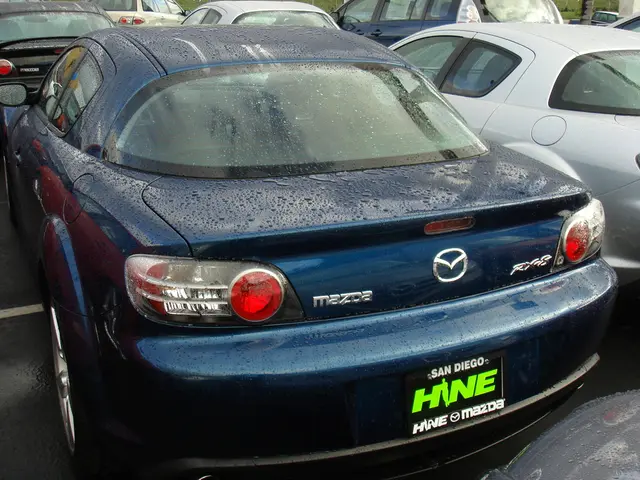Struggling with Punctuality: The German Rail Predicament
Majority of Long-Distance Trains Missed Time Target in May: Statistic Shows
Germany's long-distance trains have been facing a punctuality crisis, according to Deutsche Bahn's Chief Digital Officer, Daniela Gerd tom Markotten. In May, only 62 percent of ICE and IC trains made it to their destinations on time, a decrease from the 63.1 percent recorded the previous year. She expressed dissatisfaction with these figures, stressing that the infrastructure is the main culprit, being too dilapidated, congested, and riddled with failures.
The situation is such that a train is labeled late if it's delayed by six minutes or more. Construction sites for network renovations have slowed down Deutsche Bahn's long-distance trains. It's worth noting that train cancellations aren't included in this statistic, but they impact what's known as passenger punctuality, which indicates the percentage of passengers who reached their destination on time (within 15 minutes) in a given period. In April, this figure was 67 percent, with no data available for May at the time of publication.
The railway sector is undergoing a multi-year renovation process, both financially and in terms of infrastructure. This includes extensive renovations of heavily trafficked corridors, aimed at reducing failure rates on the tracks and boosting reliability. However, passengers may not notice the benefits for several years.
At the heart of Deutsche Bahn's troubles is an outdated infrastructure, an aging, unreliable fleet, and operational challenges. The network is often plagued by delays due to maintenance and construction works, prone to breakdowns, and marred by overcrowding and inefficient communication systems. To address these issues, Germany intends to convert routes into high-speed corridors by 2030, modernize the fleet with new models like the ICE 4 and ICE 3 Neo, and enhance customer service and communication during disruptions, making the passenger experience more pleasant.
[Sources: ntv.de, AFP]
Additional Insights:
- Aging Fleet: The long-distance fleet is aging, leading to frequent breakdowns, thereby causing delays. To counter this, Deutsche Bahn is modernizing its fleet with newer models like the ICE 4 and ICE 3 Neo, which have demonstrated higher availability.
- Operational Challenges: Overcrowding and poor communication systems exacerbate the problem. Passengers often grapple with unclear announcements and lack suitable alternatives when trains are delayed.
- Customer Service: Although compensation for delays is available, the process can be complicated. Improving customer service and communication during disruptions is imperative for enhancing the passenger experience.
- The outdated railway infrastructure in Germany, combined with an aging and unreliable fleet, presents significant operational challenges for Deutsche Bahn, particularly in terms of punctuality and customer service.
- To revitalize the railway industry in Germany, investment in both infrastructure and fleet modernization, such as converting routes into high-speed corridors and procuring new trains like the ICE 4 and ICE 3 Neo, is crucial for promoting transportation efficiency, fostering growth in the automotive industry, and ultimately, enhancing financing potential.








